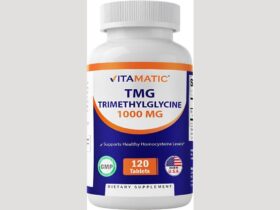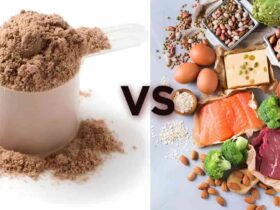How many ounces in a cup of coffee? A steaming coffee is more than just a morning ritual; it’s a moment of peace, an energizing start to the day, and a universal symbol of connection. However, as coffee culture has evolved, so has the terminology and the preparation methods. If you’ve ever wondered about the exact measurements used in coffee making or been puzzled by phrases like “a cup of coffee,” you’re not alone.
The topic of how many ounces are in a cup of coffee may seem straightforward, but it turns out to be more complex than you might expect. In this article, we dive into coffee measurements, exploring the traditional and modern definitions of a coffee cup and uncovering the reasoning behind these standards.
The Meaning of a “Cup” in Coffee Terms
When we talk about a “cup of coffee,” it’s essential to establish a baseline. In most countries, including the United States, a standard cup in cooking measures eight fluid ounces (about 237 milliliters). However, in coffee, the definition of a cup can differ significantly. A standard coffee cup is often smaller, usually around six fluid ounces or sometimes even less. This discrepancy is rooted in the history of coffee preparation and how it’s consumed globally.
In the U.S., for example, automatic drip coffee makers have adopted a standard measurement of around five fluid ounces per cup. This convention is unique to coffee makers and differs from typical liquid measurements. Consequently, if your coffee maker says it holds 12 cups, it’s referring to 60 ounces of liquid in total (12 cups x 5 ounces each), not the 96 ounces you might expect with an 8-ounce standard measurement.
Why the Difference Exists:
The deviation in measurement sizes can be attributed to traditional European coffee practices. Historically, European coffee servings have been smaller, often 4 to 6 ounces, aligning more with espresso and more potent brews. Over time, these cultural differences in serving sizes influenced how coffee cups were defined globally.
- Types of Coffee Cups and Their Ounce Measurements

Understanding the varying definitions of a coffee cup is crucial for anyone looking to brew the perfect cup. Let’s explore some common types of coffee cups and their corresponding ounce measurements:
Standard Coffee Mug: Most standard mugs in your kitchen or those you buy at the store hold between 8 and 12 ounces. However, a standard coffee serving size in a mug is around 10 ounces.
Demitasse Cup: This cup typically holds 2 to 3 ounces of espresso and is designed to serve small yet strong portions of coffee.
Cappuccino Cup: Cappuccino cups usually hold between 5 and 6 ounces, providing the ideal ratio of espresso to steamed milk.
Latte Mug: Because of their higher milk content, Lattes are served in giant mugs, ranging from 12 to 15 ounces.
The sizes of these cups correlate with the strength and richness of the coffee being served. For instance, espressos are served in tiny demitasse cups because they are highly concentrated. On the other hand, with their more extensive volume and added milk, lattes demand more giant cups to accommodate the additional liquid.
How Many Ounces in a Cup of Coffee: Breaking Down Measurements

Now, let’s address the basic question: how many ounces are there in a cup of coffee? The answer largely depends on who you ask and how you prepare your coffee. Here are some key distinctions:
Coffee Brewer Measurement: For most drip coffee makers, a “cup” of coffee is five fluid ounces. A 12-cup coffee maker can make about 60 ounces of coffee.
Barista’s Standard: In specialty coffee shops, a single serving of black coffee is often around eight fluid ounces, aligning more closely with the traditional American “cup.”
European Tradition: In many European countries, a cup of coffee is much smaller, typically around 4 to 6 ounces. This measurement is often used to serve stronger and richer brews like Turkish coffee or traditional Italian espresso.
These variations are a testament to the diversity of coffee culture worldwide. They also highlight why it’s essential to understand the different definitions of a cup, especially when following coffee recipes or brewing instructions.
Why Does Ounce Measurement Matter?
You might be wondering why it matters whether a cup of coffee is 5, 6, or 8 ounces. The accuracy of the brewing process is the main process. Coffee is a delicate balance of water and ground beans; even slight changes in the water-to-coffee ratio can drastically alter the flavor. For instance, if a coffee recipe calls for 1 cup (8 ounces) of water, but your coffee maker measures 5 ounces as a cup, you may inadvertently make your brew more robust or weaker than intended.
Moreover, ounce measurements impact caffeine intake. If you aim to control your caffeine consumption, understanding what constitutes a cup of coffee in ounces can help you make informed choices. For instance, a 12-ounce cup of black coffee typically contains around 120 to 180 milligrams of caffeine, depending on the coffee bean and preparation method.
1.The Evolution of Coffee Serving Sizes
The journey of coffee cup sizes is tied to the broader evolution of coffee culture. As coffee became a global beverage, the serving sizes adapted to regional preferences and brewing styles. The rise of specialty coffee in the 20th and 21st centuries brought new trends and innovations, leading to more extensive coffee drinks like lattes and Frappuccino’s.
In contrast, traditional coffee cultures, such as the Italian or Turkish, have remained consistent in their smaller servings. With its 2-ounce serving, the Italian espresso culture is an excellent example of this consistency. In Turkey, the rich, thick Turkish coffee is served in small, beautifully decorated cups, further emphasizing the beverage’s heritage.
Practical Tips for Brewing the Perfect Cup

With the understanding of ounce measurements and their impact on coffee, you can now take steps to ensure you brew the perfect cup every time. Here are some practical tips:
• Know Your Coffee Maker: Familiarize yourself with the measurements your coffee maker defines. If your machine defines a cup as 5 ounces, adjust your recipe to maintain the correct ratio.
• Measure Your Water and Coffee: Use a digital scale to measure water and coffee grounds precisely. This practice ensures consistency in every cup, no matter the size of your coffee maker’s “cup.”
• Understand Your Preferences: Knowing how many ounces you prefer per serving can help you personalize your brewing method. Whether you like a strong espresso or a milder brew, understanding the different ounce measurements will allow you to customize your cup.
Conclusion
The number of ounces in a cup of coffee may seem minor, but it plays a significant role in understanding the art and science of coffee brewing. From drip coffee makers’ unique definitions to the traditional small cups of Europe, the variation in measurements reflects coffee’s rich cultural tapestry. For the avid coffee lover, grasping these differences is not just about semantics; it’s about mastering the perfect cup. Armed with this knowledge, you can confidently brew coffee that matches your preferences and explore the world of coffee with greater appreciation.
might seem simple at first glance, it’s intertwined with history, culture, and brewing practices. As coffee continues evolving and inspiring enthusiasts worldwide, understanding the ounce measurements helps deepen our appreciation for this beloved beverage. So, the next time you pour yourself a cup, remember that each ounce holds a story, and every cup has a tale to tell.













Leave a Reply